These are the extraordinary stories of those people who inspired Cracked Voices.
Those who wait | Servandus
Servandus son of the Spaniard willingly fulfilled his vow to the goddess
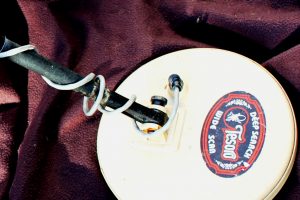 Many hundreds of miles from home, one man makes his offering to Senuna. We know nothing more than his name, which means both the person who watches over things and the preserver. His voice has long been silenced.
Many hundreds of miles from home, one man makes his offering to Senuna. We know nothing more than his name, which means both the person who watches over things and the preserver. His voice has long been silenced.
In 2002 a metal detector bleeps. Alan Meek has chanced upon a horde of votive gifts. Carefully, he disinters Servandus’s offering and the goddess’s cracked and broken statuette from its hiding place at Ashwell End.
Senuna has not seen light of day for sixteen hundred years. Some say she is the Celtic equivalent of Roman Minerva, but her history is buried deep…a mystery, just like Servandus.
Riddle the first | Etheric
Beaten for the silence I steal –
I am the cup that spills sorrow and joy.
With prayerful mouth and enduring noise,
mine is the fateful summoning voice.
Tethered yet ethereal –
no fruit in the Garden so readily peels.
 Etheric was still a young boy when his parents sent him off to study at Ramsey Abbey, and he and three playmates – Athelstan, Eadnoth and Oswald – soon fell foul of the abbey’s strict rules.
Etheric was still a young boy when his parents sent him off to study at Ramsey Abbey, and he and three playmates – Athelstan, Eadnoth and Oswald – soon fell foul of the abbey’s strict rules.
Was it a dare? Who touched a bell rope first? Egging each other on, they pulled harder and harder, the bells rang louder and louder, until – disaster – the great bell cracked.
The monks were furious. They wanted the culprits flogged, but the Abbot stopped himself, realising that some good might grow out of the boys’ remorse. Many years later, it did.
[This is the first of three riddles telling the story of Therfield Heath. The other two tell of how Etheric redeemed himself and how today we walk our dogs, jog, play rugby and watch wildlife, unaware that this semi-wild fragment of land survives solely because of a schoolboy’s prank.]
The Ballad of Alice Stokes |Alice Stokes
 On 4 August 1604, Christina and Alice Stokes were hanged at Hertford. Terrified and almost certainly tortured, they had confessed to being witches.
On 4 August 1604, Christina and Alice Stokes were hanged at Hertford. Terrified and almost certainly tortured, they had confessed to being witches.
King James of Scotland had come to the English throne only three years earlier. On his journey south he had stopped in Royston and taken note of the good hunting to be had on the extensive heathlands. This was a man who was fascinated with witchcraft.
He quickly established a bachelor pad on Kneeworth Street and visited often. What could be better for the town’s fuddle-caps and maltworms (drunken menfolk) than to serve him up with two of Royston’s most troublesome women to hang?
Composite Man | Louisa Seabourne
 In the 1870s fossils of all sorts – including hippopotamus bones – were being dug out of the ground at Barrington and beyond. Soon the Sedgwick Museum in Cambridge had enough bones from different hippopotamuses to construct a complete skeleton. By fixing them all to a specially-made metal armature they created their own Frankenstein’s monster: a composite animal.
In the 1870s fossils of all sorts – including hippopotamus bones – were being dug out of the ground at Barrington and beyond. Soon the Sedgwick Museum in Cambridge had enough bones from different hippopotamuses to construct a complete skeleton. By fixing them all to a specially-made metal armature they created their own Frankenstein’s monster: a composite animal.
But the Coprolite Pits were not about finding exhibits. The burgeoning population needed food and the fossils, when ground-up and treated with chemicals, were a highly effective, and highly profitable, fertiliser. Fossils were a cash crop.
At the workings, the labourers hand-dug trenches up to 6 metres deep before collapsing the exposed face. Accidents were commonplace and many men were buried alive… enough to form a composite man.
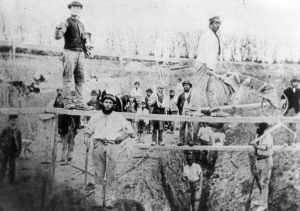 Most have no memorial other than the churches that were refurbished with the profits from their industry. This song is for all of them: Arthur Wellington Reach (aged 6), John Rayner, William Lander, James Dawson, James Mann, William Wilson, James Rayner, James Barton, (aged 21), Richard Barlow (aged 11), John Swann (aged 60), James Day (aged 25), William Starbuck (aged 9), Robert Napsey (aged 19), Thomas Lovell (aged 36), James Fortune, Moses Waller, William Crane, George Aspen (aged 26), George Hills (aged 61), William Clarke, John Dockrey (aged 18), William Hines (aged 25), Edward Wilkin (aged 23), George Wright, Henry Ginn (aged 37), a boy named Parker, Wheeler Ambrose (aged 46), George Fuller (aged 27), William Wright, Harradine Sell (aged 47) … and others, unknown.
Most have no memorial other than the churches that were refurbished with the profits from their industry. This song is for all of them: Arthur Wellington Reach (aged 6), John Rayner, William Lander, James Dawson, James Mann, William Wilson, James Rayner, James Barton, (aged 21), Richard Barlow (aged 11), John Swann (aged 60), James Day (aged 25), William Starbuck (aged 9), Robert Napsey (aged 19), Thomas Lovell (aged 36), James Fortune, Moses Waller, William Crane, George Aspen (aged 26), George Hills (aged 61), William Clarke, John Dockrey (aged 18), William Hines (aged 25), Edward Wilkin (aged 23), George Wright, Henry Ginn (aged 37), a boy named Parker, Wheeler Ambrose (aged 46), George Fuller (aged 27), William Wright, Harradine Sell (aged 47) … and others, unknown.
A Doubtful Loss | James Lucas
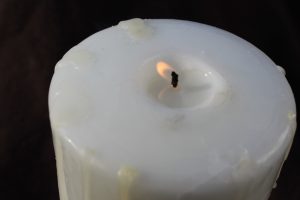 The hermit Lucas is dying…about 25 years ago, he excluded himself from the world, and has continued so ever since. During that time he has lived literally in sackcloth and ashes, never wearing any clothes beyond a blanket, and totally ignoring the use of soap and water. Some years ago the late Charles Dickens paid this notorious character a visit…
The hermit Lucas is dying…about 25 years ago, he excluded himself from the world, and has continued so ever since. During that time he has lived literally in sackcloth and ashes, never wearing any clothes beyond a blanket, and totally ignoring the use of soap and water. Some years ago the late Charles Dickens paid this notorious character a visit…
Western Mail, Tuesday 21 April 1874
James Lucas was a highly intelligent man who lived a secluded life at Redcoats Green near Hitchin. Although the term had not yet been coined, he was almost certainly a paranoid schizophrenic. Believing that his brother was responsible for his mother’s death and was plotting to kill him, he had shut himself up in his country house, barred its windows and let it slowly rot around him. In time the ruin became a tourist attraction with people travelling from far and wide to stare in at the ragged man and snidely comment, ‘Does it do tricks?’
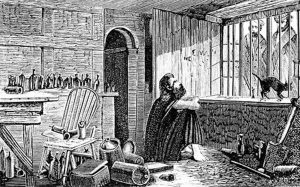 When he visited in the summer of 1861 Charles Dickens came away with a less than favourable impression of The ‘Hertfordshire Hermit’. Lucas did not suffer fools gladly, especially such a famous fool as Dickens. (The man who was just then earning his money from the serialisation about another strange recluse called Miss Havisham). Undoubtedly, the great writer felt snubbed. He hated the hermit’s indolence and, that winter, published a damning account of his visit in a special Christmas edition of his own magazine. Lucas himself never admitted the meeting but was later seen with his own well-thumbed copy of ‘Tom Tiddler’s Ground’. That piece cemented Lucas’s reputation as a man who had squandered both his life and his wealth. On hearing of Lucas’s fatal illness, The Times ran the news under the headline, ‘A Doubtful Loss’.
When he visited in the summer of 1861 Charles Dickens came away with a less than favourable impression of The ‘Hertfordshire Hermit’. Lucas did not suffer fools gladly, especially such a famous fool as Dickens. (The man who was just then earning his money from the serialisation about another strange recluse called Miss Havisham). Undoubtedly, the great writer felt snubbed. He hated the hermit’s indolence and, that winter, published a damning account of his visit in a special Christmas edition of his own magazine. Lucas himself never admitted the meeting but was later seen with his own well-thumbed copy of ‘Tom Tiddler’s Ground’. That piece cemented Lucas’s reputation as a man who had squandered both his life and his wealth. On hearing of Lucas’s fatal illness, The Times ran the news under the headline, ‘A Doubtful Loss’.
The blessing of the road-born child |Maria Holtzmann
 When I was young I remember we were let out of school very early because the Macedonians were on their way. I ran all the way home because I was so frightened.
When I was young I remember we were let out of school very early because the Macedonians were on their way. I ran all the way home because I was so frightened.
– Minnie Roberts
On Thursday 1 December 1904, five refugee families made landfall next to the Tower of London. Displaced, they were escaping from harsh new laws that the German government was enacting against travellers (a process that soon saw all gipsies fingerprinted and eventually led to Hitler’s death camps). Some in Britain were welcoming, but most were not. Although the border was open, at Westminster the politicians were arguing over a new Aliens Act which would for the first time limit immigration. No-one knew who these uninvited visitors were, and, since there was fierce fighting in the Balkans, the sensationalist press were quick to label them ‘Macedonians’.
Local authorities wanted nothing to do with them and around London and East Anglia great crowds came out to gawp at the gipsies as they were forced to move on by the police from one county to another. When they crossed the county line at Royston the entrepreneurial Robert H. Clark was there with his camera and the postcards he produced ‘had a very large sale’ (Royston Crow). At Epping the gipsies were stoned and one child suffered a bad head wound. At St Albans a crowd of around 800 gathered and it was only the presence of large numbers of police ‘that saved them from being roughly treated’ (Official Police Report).
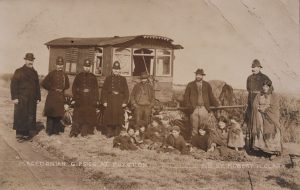 In the snow of that spring, one of the women gave birth. The apparently healthy baby girl quickly developed such bad catarrh that she could not feed. Despite Anna Holtzmann’s desperate efforts, her daughter slowly starved to death. On 13 March 1905, eight-day-old Maria was buried at Great Brickhill. The Luton Times and Advertiser commenting, ‘Such folk would not be allowed to land in the United States, but until the long-delayed Aliens Bill is passed, other places will have the experience of Great Brickhill.’
In the snow of that spring, one of the women gave birth. The apparently healthy baby girl quickly developed such bad catarrh that she could not feed. Despite Anna Holtzmann’s desperate efforts, her daughter slowly starved to death. On 13 March 1905, eight-day-old Maria was buried at Great Brickhill. The Luton Times and Advertiser commenting, ‘Such folk would not be allowed to land in the United States, but until the long-delayed Aliens Bill is passed, other places will have the experience of Great Brickhill.’
Britain was turning inward. The Aliens Act – the first legal curb on the freedom of displaced people seeking refuge – became law on 11 August that year. Its effect is still felt today.
Domestic Economy by William Stockbridge, sweep, with additional recipes by Mrs Isabella Beeton
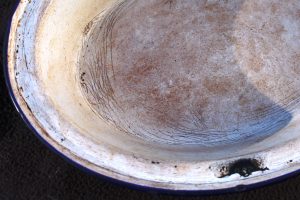 During a normal winter at Thriplow the 72 year-old chimney-sweep William Stockbridge could expect to snare a few songbirds for his cooking pot. This was not a normal winter, though. Severe blizzards over the Baltic were having a strange effect on counties in the east of England. As well as bitingly cold weather, a deep cyclone over Sweden was driving millions of skylarks across the North Sea. It had happened once before in living memory and now again, in 1912, the birds were settling in huge numbers on the open fields and heathland from Duxford to Baldock, scrabbling for whatever food they could find in the hard frost. In London larks were considered a culinary delicacy, a dish that the rising middle-classes should aspire to serve at their dinner parties (as promoted by Mrs Beeton’s famous Book of Household Management). Sensing a profit, locals now flocked to harvest the hungry birds. When the sun had set, pairs of men, one at each end of a thirty foot trammel net would trawl the fields, dropping the net suddenly as the frightened birds flew up into it. The national newspapers were soon reporting that in one week alone 30,000 dead birds (one and a half tons) were sent to London by train from Royston. Stockbridge, the only man prepared to talk about the slaughter, was dubbed ‘the doyen of lark-snarers’ and held up to both criticism and ridicule.
During a normal winter at Thriplow the 72 year-old chimney-sweep William Stockbridge could expect to snare a few songbirds for his cooking pot. This was not a normal winter, though. Severe blizzards over the Baltic were having a strange effect on counties in the east of England. As well as bitingly cold weather, a deep cyclone over Sweden was driving millions of skylarks across the North Sea. It had happened once before in living memory and now again, in 1912, the birds were settling in huge numbers on the open fields and heathland from Duxford to Baldock, scrabbling for whatever food they could find in the hard frost. In London larks were considered a culinary delicacy, a dish that the rising middle-classes should aspire to serve at their dinner parties (as promoted by Mrs Beeton’s famous Book of Household Management). Sensing a profit, locals now flocked to harvest the hungry birds. When the sun had set, pairs of men, one at each end of a thirty foot trammel net would trawl the fields, dropping the net suddenly as the frightened birds flew up into it. The national newspapers were soon reporting that in one week alone 30,000 dead birds (one and a half tons) were sent to London by train from Royston. Stockbridge, the only man prepared to talk about the slaughter, was dubbed ‘the doyen of lark-snarers’ and held up to both criticism and ridicule.
 After investigation by the Royston Crow, it was later admitted in Parliament that the papers had got it wrong and the numbers caught, though staggering, were far fewer than had been initially claimed. It took a further ten years for the RSPB to persuade Harrods to stop stocking skylarks. Due to changes in crops and farming methods over the last century, there has been a drastic decline in larks but they can still regularly be heard warbling over Therfield Heath.
After investigation by the Royston Crow, it was later admitted in Parliament that the papers had got it wrong and the numbers caught, though staggering, were far fewer than had been initially claimed. It took a further ten years for the RSPB to persuade Harrods to stop stocking skylarks. Due to changes in crops and farming methods over the last century, there has been a drastic decline in larks but they can still regularly be heard warbling over Therfield Heath.
Many of William Stockbridge’s words are his own, as reported in the London Daily News. The recipe for lark pie given in the song is adapted from Mrs Beeton.
The devil and the draper | Sidney Powell’s shindy
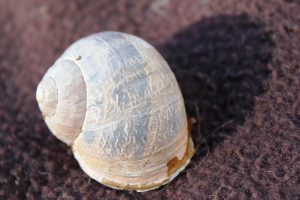 Church Hill the highest on Royston Heath, is supposed to be the same height as the Church, hence its name. At the base may be seen the perfectly formed beds called the devils Hopscotch. Tradition says by hopping round them nine times without stopping his Satanic Majesty will appear.
Church Hill the highest on Royston Heath, is supposed to be the same height as the Church, hence its name. At the base may be seen the perfectly formed beds called the devils Hopscotch. Tradition says by hopping round them nine times without stopping his Satanic Majesty will appear.
– Hertford and Bedford Reformer, 31 July 1841
…an excavation was made on top of Church Hill… About 21/2 ft from the top was a deep cleft to the N.W. side, filled with clay. At the same depth was found ashes and charcoal, with fragments of a British urn baked outside, and a skeleton of a man supposed to be near 6 ft. high; the skull was protected by a large flint…A flint arrow head was afterwards discovered.
– Royston Crow, 2 October 1865
The town has not yet recovered from the painful shock which it received on Tuesday morning when it became known that Mr Sidney Powell, only son of Mr and Mrs C Powell, of ‘Westry’, had been found dead on the Heath…under tragic circumstances.
– Herts and Cambs Reporter, 21 August 1912
Jesus from Hut 7 | Klaus Kellner
 Klaus Kellner was…not sulky, nor argumentative, and seemed to fit in fairly well with the other prisoners in his hut. Then, quite suddenly… he ‘got religion’…He let his hair grow long, and in this age of cropped heads, his mane of copper locks looked distinctly odd. He gave up shaving, and soon had a full reddish tinged beard….He wrote out such bits of the Bible as he could remember…and he bound them together with two bits of cardboard. Armed with this, he went from hut to hut attempting to preach…Most of the time he was kicked out, either verbally, or even sometimes physically, but he bore no malice. He forgave them, he said, as he picked himself up from the ground outside the huts, and he inevitably returned later. In time, he came to be known as ‘Jesus from Hut 7’ and in his appearance and manner, he grew more and more like one of the ancient Prophets.
Klaus Kellner was…not sulky, nor argumentative, and seemed to fit in fairly well with the other prisoners in his hut. Then, quite suddenly… he ‘got religion’…He let his hair grow long, and in this age of cropped heads, his mane of copper locks looked distinctly odd. He gave up shaving, and soon had a full reddish tinged beard….He wrote out such bits of the Bible as he could remember…and he bound them together with two bits of cardboard. Armed with this, he went from hut to hut attempting to preach…Most of the time he was kicked out, either verbally, or even sometimes physically, but he bore no malice. He forgave them, he said, as he picked himself up from the ground outside the huts, and he inevitably returned later. In time, he came to be known as ‘Jesus from Hut 7’ and in his appearance and manner, he grew more and more like one of the ancient Prophets.
– Alfred J Christiansen, Unpublished Memoir (IWM Archive)
Despite the barbed-wire, water-tower and breezeblock huts with corrugated iron roofs, Camp 29 was not there. For the whole of the Second World War it did not exist. It was definitely not on the heath a few hundred yards from Royston’s High Street. Not one newspaper dared mention its construction or the six hundred Italian, and then German, Prisoners of War living behind its fences. Marked out by a coloured patch on their chocolate brown uniforms, prisoners such as Klaus Kellner and Alfred J Christiansen existed there in limbo, only ever permitted out under guard to work for the enemy on the nearby labour-starved farms. In return, they were paid in plastic discs which they exchanged at the canteen for tobacco, razor blades or sickly-sweet cake. As bombers from the neighbouring airfields grouped high above the camp, the inmates tried to keep busy to block out any thought of their families back home and where the planes were headed. Apart from endless games of football, the inmates spent their time putting together a make-shift theatre and the British camp commandant supplied a ropey piano. Things ticked along while sport and the arts made not thinking easier.
 But early in 1945 a sudden intensive search of the camp by an outside British Army unit changed everything. Men’s belongings were rifled, the theatre was all-but destroyed. Nothing untoward was found. It would take weeks for the camp to get back to normal and in Hut 16 the intrusion rankled deeply. The balance had been disrupted and would only be restored with an equally obnoxious act of defiance. All it took was a sheet, some pillow cases and a few bottles of ink. That April, on Hitler’s birthday, locals woke to find, fluttering from the camp’s water-tower, a full-size German swastika. Needless to say, it was never reported.
But early in 1945 a sudden intensive search of the camp by an outside British Army unit changed everything. Men’s belongings were rifled, the theatre was all-but destroyed. Nothing untoward was found. It would take weeks for the camp to get back to normal and in Hut 16 the intrusion rankled deeply. The balance had been disrupted and would only be restored with an equally obnoxious act of defiance. All it took was a sheet, some pillow cases and a few bottles of ink. That April, on Hitler’s birthday, locals woke to find, fluttering from the camp’s water-tower, a full-size German swastika. Needless to say, it was never reported.
A distant murmuration | Joyce Hatto
 On her death in June 2006 The Guardian described Joyce Hatto as ‘one of the greatest pianists Britain has ever produced.’ The 77-year-old Roystonian had been suffering from cancer for thirty years. The treatment was increasingly debilitating and prevented her from giving concerts. Nevertheless, her hundred-odd CDs revealed an unbelievably versatile talent.
On her death in June 2006 The Guardian described Joyce Hatto as ‘one of the greatest pianists Britain has ever produced.’ The 77-year-old Roystonian had been suffering from cancer for thirty years. The treatment was increasingly debilitating and prevented her from giving concerts. Nevertheless, her hundred-odd CDs revealed an unbelievably versatile talent.
It was not until the following February that the truth was revealed. In New York, Brian Ventura put a Hatto CD into his computer and waited for it to load. When he looked up, he was amazed to find that iTunes had identified the recording as one by a little-known Hungarian called László Simon.
Recording after recording proved to have been faked by Hatto’s sound engineer husband, William Barrington-Coupe. Later he was to claim that his wife had no knowledge of the fraud. ‘I simply let her hear the finished editing that she thought was completely her own work.’ No one will ever know whether Joyce either knew or guessed what was done in her name.
Earthrise | Edward Mallen

There is an old French folktale. The kingfisher was created a muddy brown or grey bird, not colourful at all. When the flood came, it travelled with the other animals on the Ark and Noah released it at the same time as the dove to look for land. After being cooped up for so long, it was overjoyed by the sense of release. It flew so high that it scorched its breast on the sun and scraped the blue from the sky. Eventually it remembered it was meant to return with news of land and it flew down to find Noah. However, the Ark was gone and the kingfisher has been searching for it ever since.
Edward Mallen was an academically and musically gifted 18-year-old from Meldreth. He was curious about everything, tenacious and focused, and enjoyed travelling, playing cricket and birdwatching and often visited the hides at RSPB Fowlmere to watch the kingfishers. Given his wide knowledge and enquiring nature, he probably knew that it is the play of light on the kingfisher’s feathers that makes it appear blue. A joyous sight.
In February 2015, following the unexplained, rapid and catastrophic onset of depressive illness, Edward took his own life. His case highlighted the urgent need for training and investment in teenage mental
wellbeing. In response, his family set up the MindEd trust to do just that.
Curating the collection | each of us

We are all curators of memory. We collect and recollect. Selecting and shaping, we create our own myths.
What is rubbish and what is to be put on display?
Life is in the finding out.
